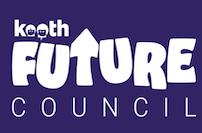Our 2023 gender pay gap (GPG) analysis shows our statutory gender pay gap in comparison to our 2022 GPG. It also provides insight into how we are addressing our gender balance.
Please refer to the definitions below when reading about our pay gap metrics:
• Median GPG: the difference between the median hourly rate of pay of male full-pay regular employees and that of female full-pay relevant employees.
• Mean GPG: the difference between the mean hourly rate of pay of male full-pay relevant employees and that of female full-pay relevant employees.
This year our female workforce, as a proportion of total employees, decreased 3.5% to 75.7%. Kooth employs more women than men, which reflects the gender imbalance in the healthcare sector. We are aligned with the high percentage of female employees in the NHS (69% as of 20227 ) and in the US healthcare sector (76%).
In 2023, our mean gender pay gap decreased 3% to 31.8% and our median pay gap widened to 35%. The decrease in mean indicates that the average pay of men and women has become more aligned, reflecting the increased female pay across the business.
As expected, the median pay gap widened as a result of a large increase in practitioner hiring due to our US expansion, with the largest proportion being female, reflecting the industry in both the UK and the US.
The gender pay gap shows the difference in pay between men and women across the business, irrespective of job similarities and seniority. It is not symptomatic of unequal pay, as a number of complex factors play a role. The distribution of male and female employees across the business and the type of roles they fill are both key contributors to the gender pay gap. Men and women are paid equally for doing equivalent jobs across the firm and we continue to monitor this regularly to ensure that this remains the case.
We continue to be committed to reducing our pay gap in the following ways:
• Offering flexible working policies.
• Company-wide campaigns to ensure employees feel informed and connected.
• Our counsellors are paid the same regardless of gender within the industry; this is also true of our management team.
• We make an effort to understand our gender gap to analyse and assess where more focus is required.
• We partake in blind recruitment of our practitioners and our recruitment process includes panel interviews to ensure a more inclusive approach to hiring.
• Our Diversity and Inclusion Council and Kooth Employee Voice Group ensure employees have an outlet to raise concerns and give feedback.
The percentage of women in each pay quarter
At Kooth, women occupy 62% of the highest paid jobs and 90.4% of the lowest paid jobs.
Upper hourly pay quarter (highest paid)
62% of the upper hourly pay quarter (highest paid) are women
38.1% of the upper hourly pay quarter (highest paid) are men
Upper middle hourly pay quarter
80.7% of the upper middle hourly pay quarter are women
19.3% of the upper middle hourly pay quarter are men
Lower middle hourly pay quarter
82.5% of the lower middle hourly pay quarter are women
17.5% of the lower middle hourly pay quarter are men
Lower hourly pay quarter (lowest paid)
90.4% of the lower hourly pay quarter (lowest paid) are women
9.7% of the lower hourly pay quarter (lowest paid) are men
For our 2023 gender pay gap report visit: (page 53) https://investors.kooth.com/docs/koothplclibraries/archive/reports/2023-annual-report.pdF





